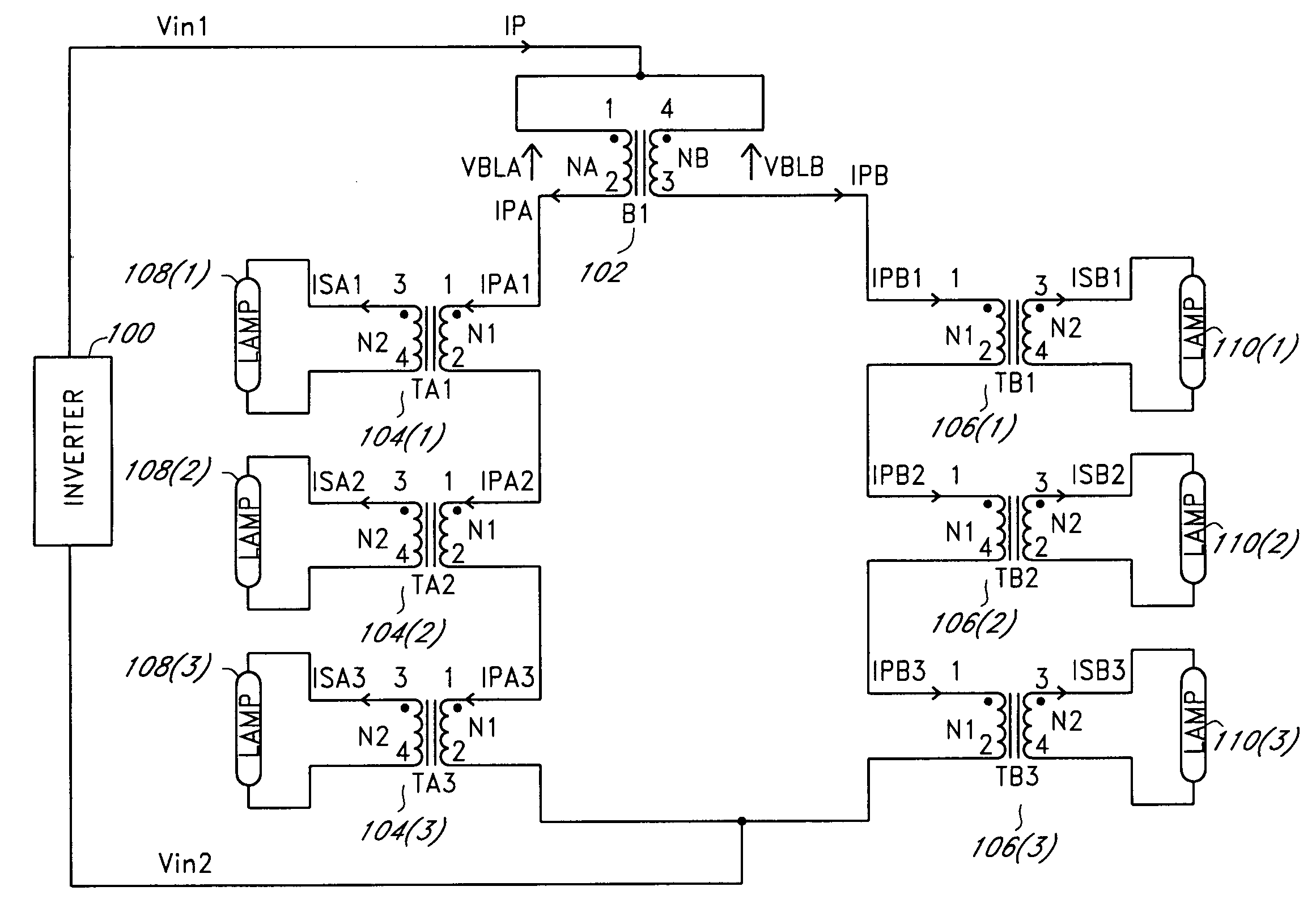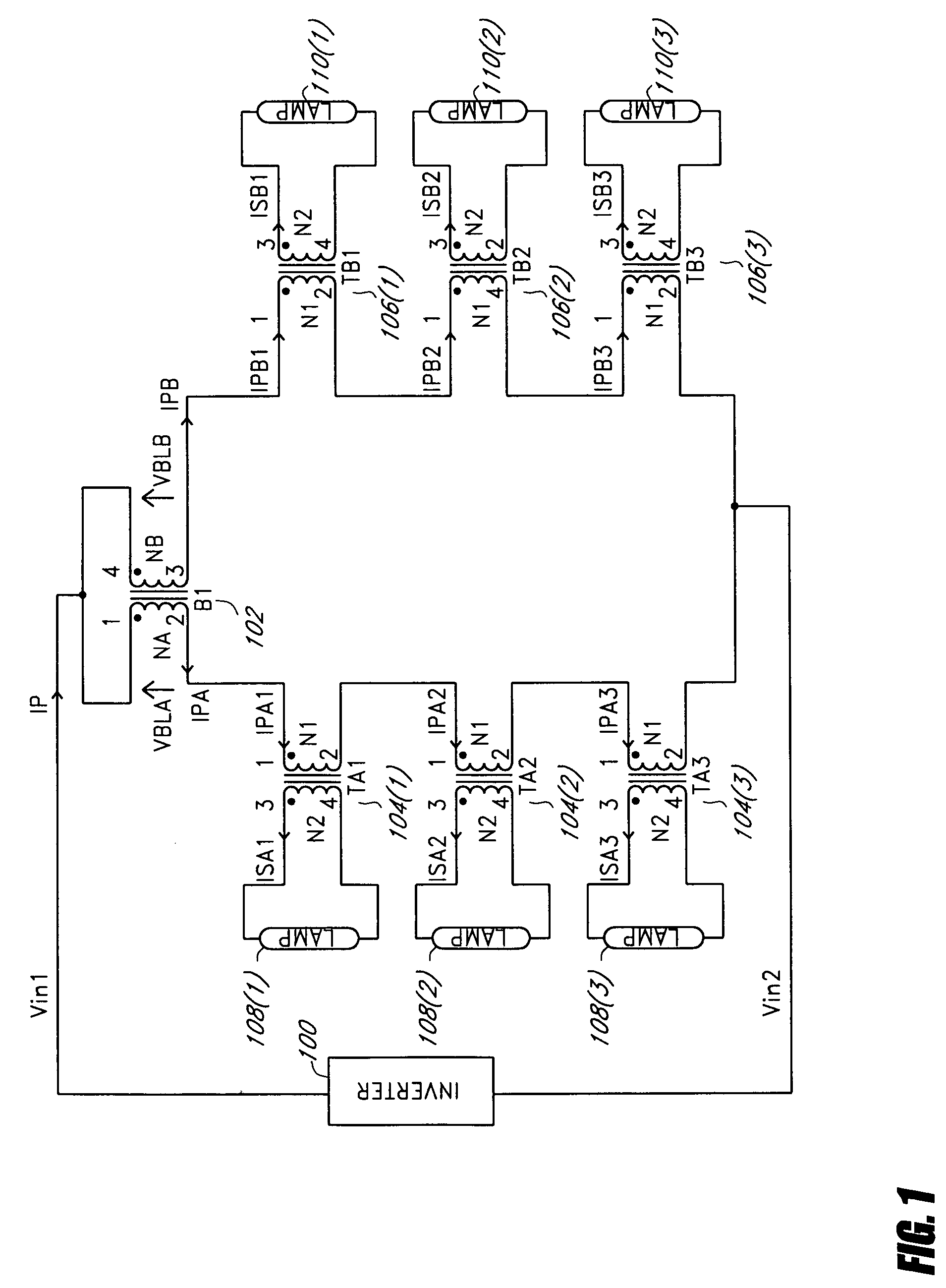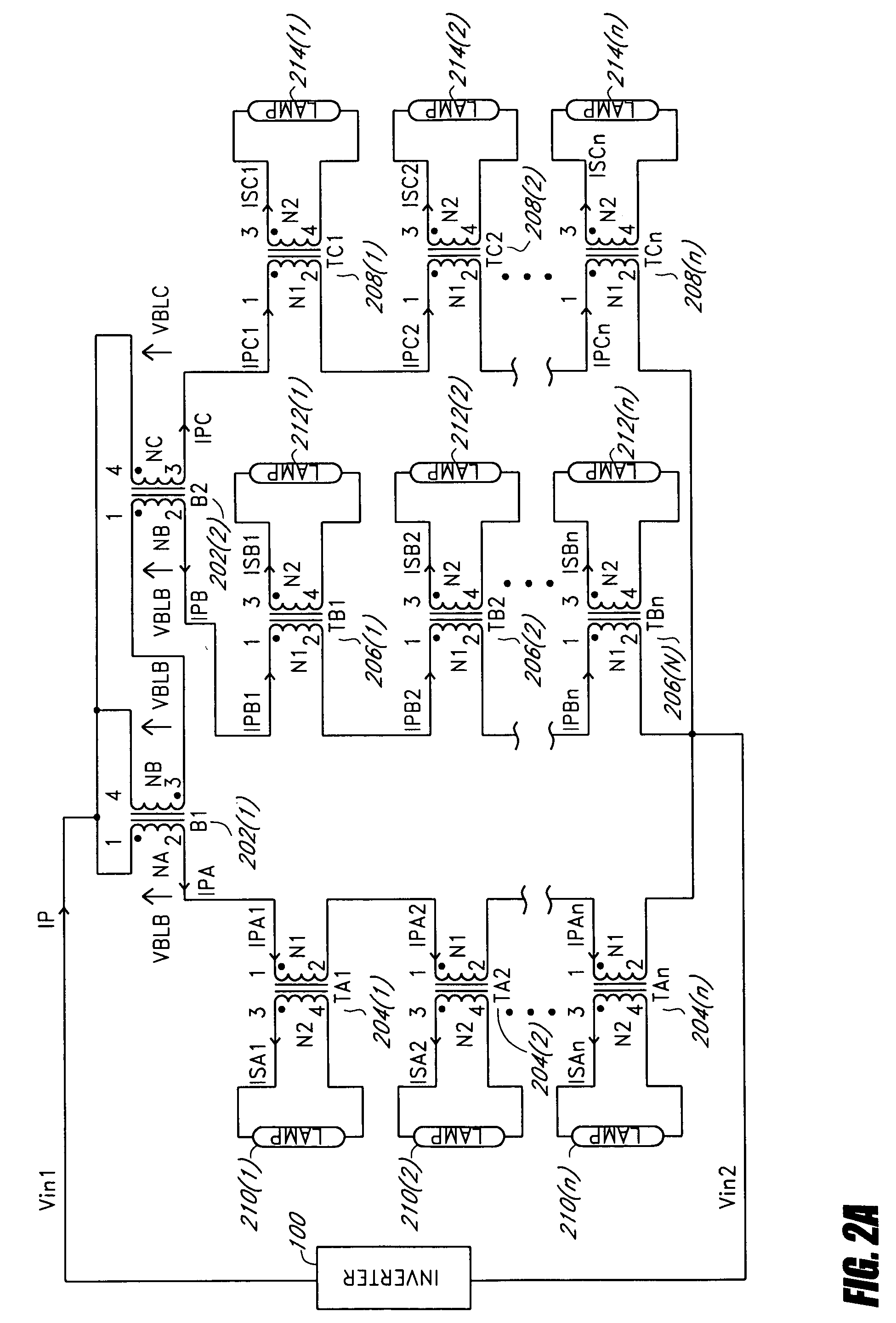Primary side current balancing scheme for multiple CCF lamp operation
a current balancing and lamp operation technology, applied in the field of current balancing, can solve the problems of reducing electronic control and power switching devices, system cost, and difficulty in achieving equal current sharing among lamps, and achieve the effect of balancing mechanisms
- Summary
- Abstract
- Description
- Claims
- Application Information
AI Technical Summary
Benefits of technology
Problems solved by technology
Method used
Image
Examples
Embodiment Construction
[0027]Although particular embodiments are described herein, other embodiments, including embodiments that do not provide all of the benefits and features set forth herein, will be apparent to those of ordinary skill in the art.
[0028]FIG. 1 illustrates one embodiment of balanced groups of serially-coupled lamp transformers using one balancing transformer (B1) 102 for two transformer groups. The balancing transformer 102 has two balance windings coupled in reverse polarity between an input node (Vin1) and the respective transformer groups. In one embodiment, an inverter 100 is coupled between the input node and a reference node (Vin2) to generate a voltage supply or a current supply. The voltage supply or the current supply provides a common AC current (IP) to the balancing transformer 102. The balancing transformer 102 divides the common AC current into two balanced currents (IPA, IPB). The first balanced current (IPA) is conducted by the first balance winding and the second balanced...
PUM
 Login to View More
Login to View More Abstract
Description
Claims
Application Information
 Login to View More
Login to View More - R&D
- Intellectual Property
- Life Sciences
- Materials
- Tech Scout
- Unparalleled Data Quality
- Higher Quality Content
- 60% Fewer Hallucinations
Browse by: Latest US Patents, China's latest patents, Technical Efficacy Thesaurus, Application Domain, Technology Topic, Popular Technical Reports.
© 2025 PatSnap. All rights reserved.Legal|Privacy policy|Modern Slavery Act Transparency Statement|Sitemap|About US| Contact US: help@patsnap.com



